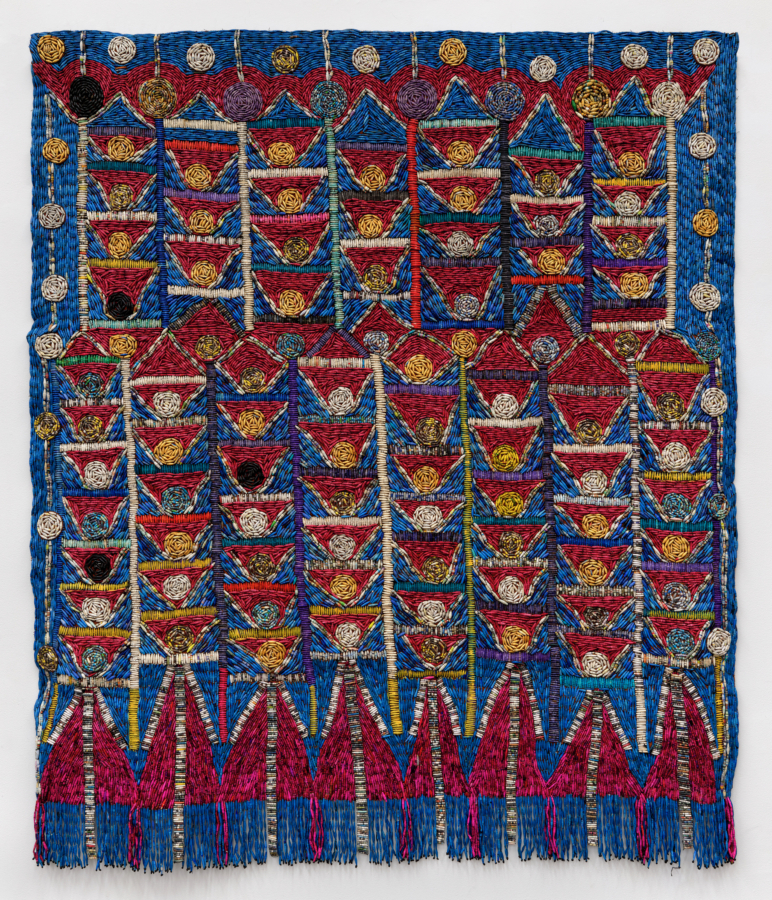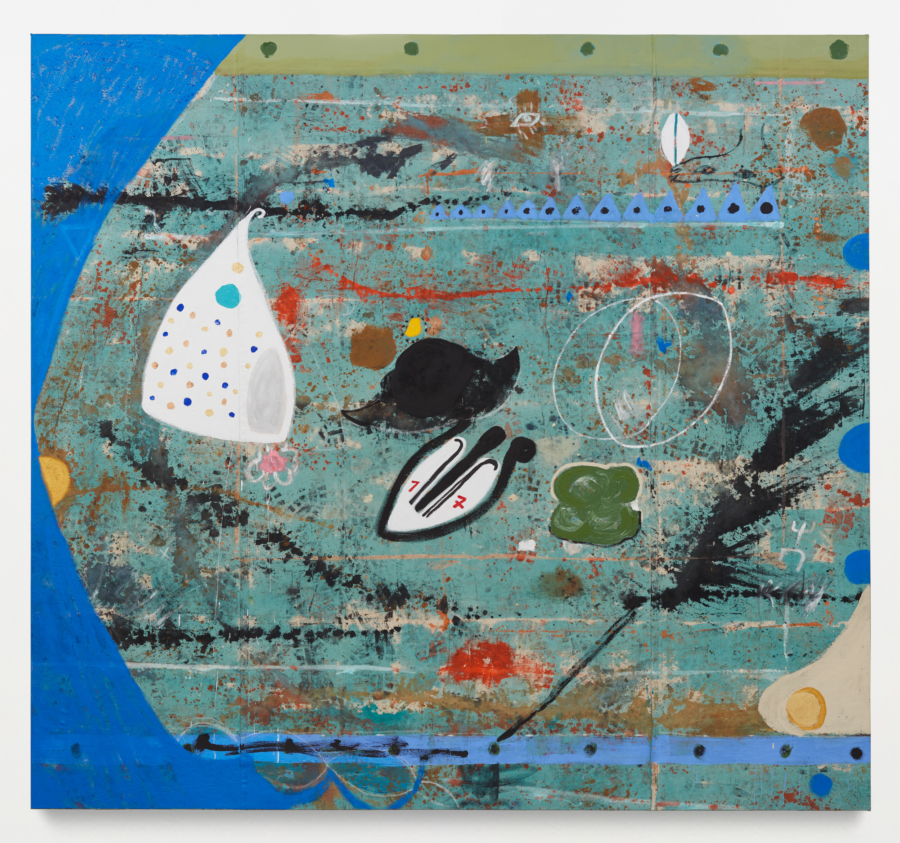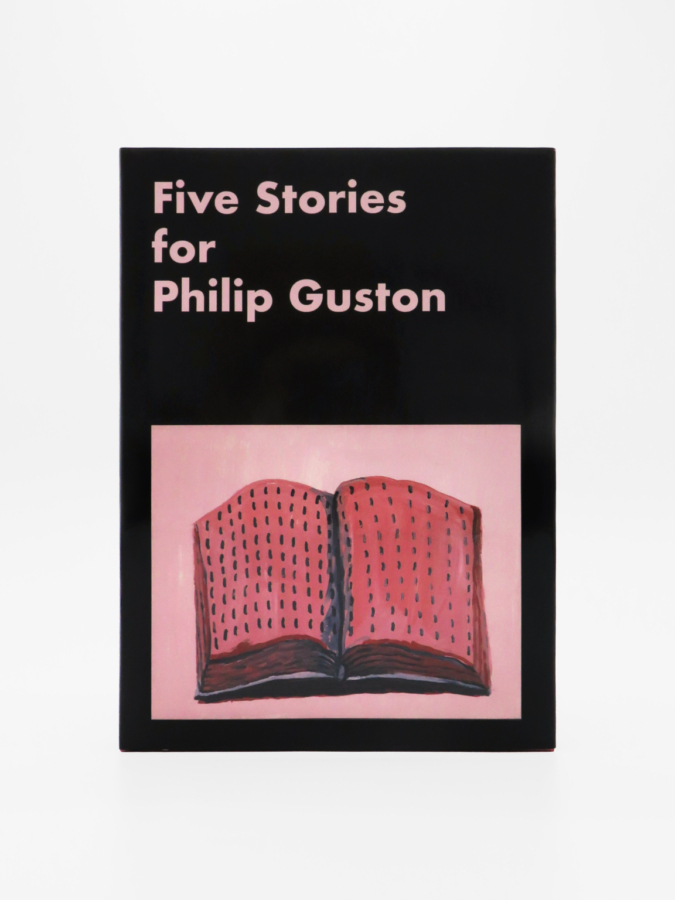Kathy Butterly, Lynne Drexler, and Marley Freeman
July 9–September 3, 2023
70 Main Street, Thomaston, ME
Open Friday, Saturday, and Sunday 10–6pm
Kathy Butterly, Lynne Drexler, and Marley Freeman
July 9–September 3, 2023
70 Main Street, Thomaston, ME
Open Friday, Saturday, and Sunday 10–6pm
Karma presents Kathy Butterly, Lynne Drexler, Marley Freeman at 70 Main Street, in Thomaston, Maine, from July 9 to September 3, 2023.
This exhibition brings together the work of Kathy Butterly, Lynne Drexler, and Marley Freeman, artists of different generations who have all lived and worked in Maine. Placed in dialogue together, the practices of Butterly, Drexler, and Freeman forge a critical genealogy of women artists whose work responds to the unique environs of Maine, a landscape marked by expansive views, ocean-enhanced light, and a storied history of artist spaces and colonies, including the site of the exhibition, a church built in 1914 that painter Ann Craven carefully restored. The works on view, spanning oil paintings, fused-glass works, and glazed ceramic vessels, lay foundations for a new, site-responsive vernacular of color, form, and light.
Kathy Butterly (b. 1961) is a sculptor living between Maine and New York City, who works primarily with intimately scaled vessel forms. In Maine, Butterly finds inspiration in her garden, where she watches “bulbs develop and bees pollinate,” and in turn observes “how petals glow like the glazes” she uses in her practice. Beginning with found objects such as store-bought containers and other consumer packaging, the artist creates a slip-cast ceramic replica, which she then transforms by delicately crumpling and molding its exterior. Butterly’s intricately adorned and formed vessels take months to complete; she repeatedly refires her works—sometimes up to forty times—between rounds of glazing. She chooses to call the small, geometric blocks used to display her vessels podiums, rather than the more traditional pedestals, to highlight her endeavor to let her works speak for themselves. The undulating vessel in Crossroads (2020), which sags over three softened, rectangular forms made of thinly rolled clay, limns the borders between rigidity and responsiveness, precarity and balance. The vivid red podium in Oasis (2022) contrasts with the curving, gaping top-half of the sculpture, rendered in ocher, white, and pebble-gray. A thin band of miniscule orbs, reminiscent of a string of pearls, encircles the rim of the work.
Lynne Drexler (b. 1928, d. 1999) began her career as an Abstract Expressionist in the mid-century art scene centered around New York’s Greenwich Village. In the 1960s she began to increasingly spend time in Monhegan, a small island in Maine, and in 1983 moved there to live and paint full time, explaining that “when you live here you learn to see who you really are. You are very close to nature, and nature clarifies you to yourself.” In this selection of works, dated from the years the artist spent residing in Monhegan, her representational turn is evident in her application of her signature dense, swatch-like brushwork to natural landscapes and still lifes. Drexler used angular strokes and electric hues to depict a vase of flowers in For Winter Warmth (1986), creating a proto-pixelated effect. In Tree Community (1994) the artist flirts with a return to abstraction—a forest scene emerges, upon close observation, from the realm of gesture and pattern.
Marley Freeman (b. 1981) is an artist based between New York City and Massachusetts. She works primarily in the medium of painting. About working as an artist in Maine, Freeman notes, “Everything there is so present, and I felt I needed to work from more direct sources.” For this exhibition, the artist made a series of site-responsive fused-glass works, which she created, in collaboration with the master glass maker Narcissus Qualiata, by joining distinct translucent plates in a kiln. Freeman based these pieces on an early series of paintings she made while on Mount Desert Island, Maine. Hung directly in front of the former church’s windows, these works both play with and alter the environment of their display by filtering beams of sunlight and alluding to the spiritual origins of the space. Sinister ally (2023) is a tumult of smooth, organic forms, carefully layered to either transmit or absorb light. In this new form, Freeman extends her ongoing investigation of the multisensorial experience of color and light.
The exhibition will be accompanied by a catalogue featuring writing by Paige K. Bradley, Bob Nickas, and Wendy Vogel.



